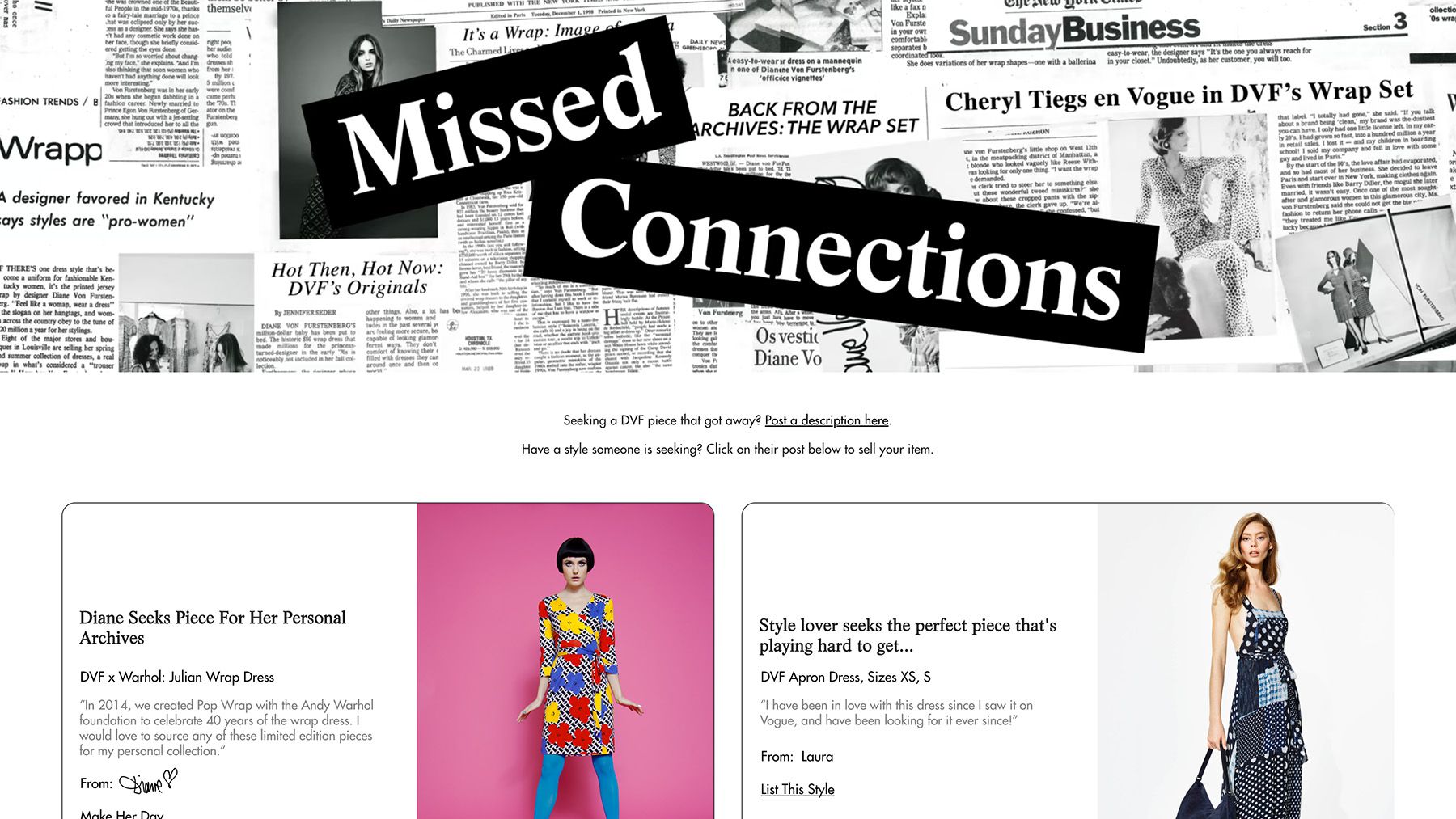
DVF, the fashion brand launched by designer Diane von Furstenberg in 1972, is making its foray into the resale category.
The brand is launching “ReWrap,” a peer-to-peer resale programme with tech start-up Archive on DVF’s e-commerce site.
DVF’s customers will be able to shop pieces from the brand’s own archives as well as buy and sell pre-owned pieces among one another. They’ll also have access to a tab called “Missed Connections” that operates like a classifieds page where users put out requests for DVF pieces they’ve been trying to find.
The section will include a “Diane in Search Of” list where the designer herself will put out a call for the pieces she wants to add to her own closet, including items from her 2014 Andy Warhol print collection.
“One of the challenges with resale is knowing when to list something or matching the demand with the supply that you have,” said Emily Gittins, Archive’s chief executive and co-founder of Archive. “But people can actually go on to the DVF site and see what other people are looking for.”
Branded resale is becoming increasingly popular among fashion labels of all kinds, with retailers including Shein, Canada Goose, Mara Hoffman and Balenciaga all adding secondhand commerce to their stores or websites in recent months.
While DVF’s dipping its toes into resale with a purely digital offering, the brand could expand into different models, including leveraging its stores, launching a mail-in program and adding new markets, Gittins said.
“One thing that stands out with this launch is it’s using resale as a way to showcase the history and storytelling around the brand’s journey,” she said.
Known for the success of her wrap dress that first hit the market in the 1970s, Diane von Furstenberg’s brand had its share of highs and lows in the decades that followed. The pandemic and new leadership — in 2021, it named Gabby Hirata as president and Diane’s granddaughter Talita von Furstenberg became co-chairwoman — marked a reset. It shuttered stores and slashed production by half before making a return to profitability for the first time in a decade in 2021.



